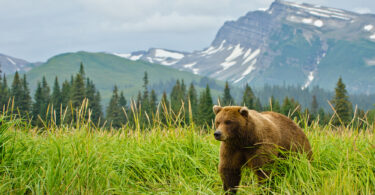This blog post was updated on August 26, 2021.
In The Hangover II, Stu, Alan, and Phil wake up with blurry to non-existent recollections of yet another wild evening. This time, the best friends are in Bangkok. It’s a city known for its exotic and X-rated attractions. But this cool city also has vibrant and under-appreciated sectors featuring art, culture, and fashion. If you know where to go, Bangkok can really be one of the best family vacations you can take.
Don’t believe us? Check out this list of safe and fun PG experiences that’ll get you looking for flights to Bangkok right away!
Take a Stroll Through Old Bangkok

The city is its finest in the busy, hot streets of the Old City district. You’ll be able to find temples and palaces on every corner, the golds and reds dazzling under the Thai sun. There are art galleries and museums that visitors can check out, but by far the best attraction to see in Old Bangkok is The Grand Palace.
Built in 1782, The Grand Palace is the official home of the Kind of Thailand. It’s bright gold roofs, stark white facades, and proximity to the Chao Phraya River make it a very popular tourist destination.
The surrounding gardens and courtyards act like small oases from the hustle and bustle of the nearby streets. Other things to check out in the area include the Moorish Saranrom Palace and the traditional National Theatre (where traditional Thai shows are performed).
Dig into Some Succulent Street Food

Some people travel for love, others for adventure, and many for food. If you fall into the last category, then Bangkok is sure to tickle your taste buds. While walking around the city, you’re sure to encounter delicious and colorful creations on offer — whether in the form of a spicy and savory Thai curry or a citrusy papaya salad.
Some of the best places to get close and comfortable with Thai street food are in Bangkok’s Chinatown, Silom Soi 20 (preferably for early morning snacks), and Wang Lang Market.
If you only have time to check out one of the three, Wang Lang Market is the place to go. Visitors can dive into sticky rice, custards, pork soup, and more noodles than you could ever dream of.
Meditate at Buddhist Temples

Buddhism is Thailand’s main religion (95% of the country is Buddhist) so there are hundreds of temples you can visit. The most famous is Wat Arun, which is the Temple of Dawn. The temple was completed in 1824 by King Rama III and is enormous. Its facades are covered in glistening bits of Chinese ceramic, best seen from the opposite side of the Chao Phraya River. Other important temples are Wat Phra Kaew (or the Temple of the Emerald Buddha) that’s on the premises of the Grand Palace, and the neighboring Wat Pho.
The Wat Pho is home to the largest reclining Buddha statue. It’s 150 feet long, covered in gold leaf, and inlaid with mother-of-pearl.
Other notable temples include the Marble Temple (Wat Benchamabophitr), Wat Saket (home to Golden Mount, which offers an incredible view of Bangkok), and Wat Traimit (houses the world’s largest golden Buddha).
Ride Along the Sparkling Klongs

There’s a reason Bangkok is known as the “Venice of the East.” Criss-crossing the heart of downtown are networks of canals still used by locals and tourists alike. The canals, or klongs, are a magical, hectic, and exciting place.
You can explore the intricate canal system in many ways, but the most popular mode is by longtail boat.
Longtail boats hold around 6-8 people and are powered by strong motors. The houses that line the klongs range from the most austere to the most dilapidated. There are floating food and trinket vendors, children playing at the water’s edge, and locals just going about their day.
Get Lost in the Chatuchak Market

The first thing to know about the Chatuchak Market is that it’s only open on weekends — so if you show up on a weekday, don’t be too disappointed if it’s not open! This the place to shop till you drop.
There are locals selling plants, accessories, and artisanal products — with over 8,000 stalls, anything your heart desires can be found here.
Because the market is so huge (it’s the largest market in Thailand), it’s best to look up exactly what you want to buy and where you’ll have to go to find it (the market is broken up into 27 sections, so this can be done pretty easily). Prices are already pretty reasonable, but like most street vendor experiences, they can be easily haggled down. Because the heat can be a bit stifling, plan to get there early (10 am), and be prepared to dive in!
Break a Sweat in Lumpini Park

Lumpini is Bangkok’s lung. More than 140 acres large, the park has an artificial lake, paths for joggers and cyclists, and a variety of flora and fauna. Notably, the park has a smoking and dog ban, intended to keep the park as pristine as possible.
The park is named after the Buddha’s birthplace in Nepal. It’s the perfect respite from the noisy traffic of the nearby city, and has playgrounds, paddleboats, and scaly monitor lizards.
For those looking for fun activities, early morning t’ai chi classes are usually hosted here, as well as aerobics and yoga.
Unfold the Magical History of Thailand’s Elephants

Thailand’s rich, intimate history with elephants means that it’s pretty easy to come into contact with an elephant or an elephant by-product. It’s important to remember that this has led to some not-so-great treatment of these majestic animals, so make sure that the places you visit care and protect their elephants. Three well-known elephant parks are the Elephant Nature Park near Chiang Mai, the Thai Elephant Conservation Center in Lampang, and Boon Lott’s Elephant Sanctuary. Different packages are available for visitors to stay for longer periods of time, to go on treks, and also to bathe the elephants.
It’s probably best to avoid any elephant rides — elephant backs are incredibly fragile and aren’t meant to hold any weights!
For more elephant stuff, the Erawan Museum in Bangkok is home to an enormous three-headed elephant statue that is cast in pure green-hued copper. It’s an epic statue that depicts Erawan, the elephant who carries the Hindu god Indra. Inside the museum is an intriguing collection of cosmic, religious, and general psychedelic artifacts and art.
Sweat It Out in Bangkok’s Best Spas

A few steps away from the humidity and bustle of Bangkok’s busy streets are some of the world’s best spas. Bangkok is home to some of the best Thai massages, body cleanses, and mindfulness retreats. After a day spent in one of these spas, you’ll feel like you can conquer the world. Thai massages are famous for their use of acupressure and assisted yoga poses to help heal the body and mind.
Traditional practice is done without oil or creams, and the receiver generally remains fully clothed. The masseuse will generally contort your body and apply pressure at certain points, or “sen”, in the body. These can last up to two hours, and will leave you feeling restored and refreshed.
Notable places to experience Thai massages, saunas, and some other more “Western” spa experiences include the opulent Oriental Spa, the I.Sawan in the garden of the Grand Hyatt Erawan, and Health Land (a chain of massage parlors that can be found all over Bangkok).
Shop the Seas of Silks

If there’s one thing you’ll want to bring back home with you from Thailand, it’s some of its world-famous silk. These can be found in the Pahurat Textile Market (known also as Little India) or Silom Village.
Here, stalls and streets are lined with shimmering yellows, ephemeral teals and greens, and bright reds and oranges. Walking around, it feels like the walls breathe and move with you, each piece of cotton, satin, or linen begging to be touched and admired.
The silk in Thailand is sold by the yard and certain regional varieties exist, like Mat Mee silk, which comes from the northeast of Thailand, and is known for its tie-dyed patterns. Ready-made sarongs, blouses, and curtains can be purchased or fabrics can be chosen and products can be tailor-made, and ready to be picked up just a few days later. Just be sure you’re buying the real thing — some shops will try to trick tourists and sell synthetics (small street stalls are known to do this more frequently; for silks, it’s best to stick to markets!).
Do you have some family-friendly Bangkok destinations that you love? Let us know what they are in the comments below!







Leave a Comment